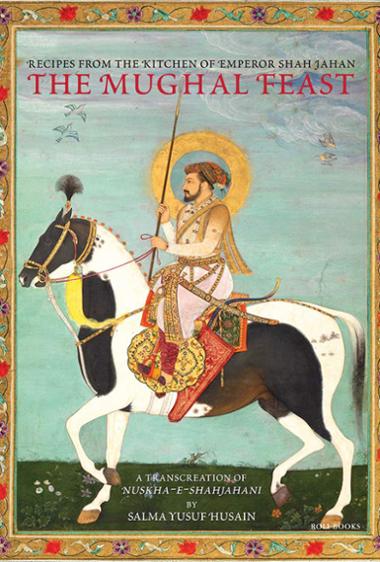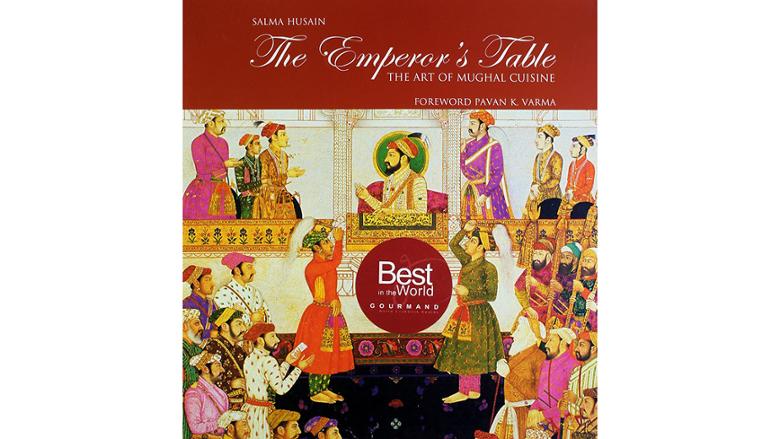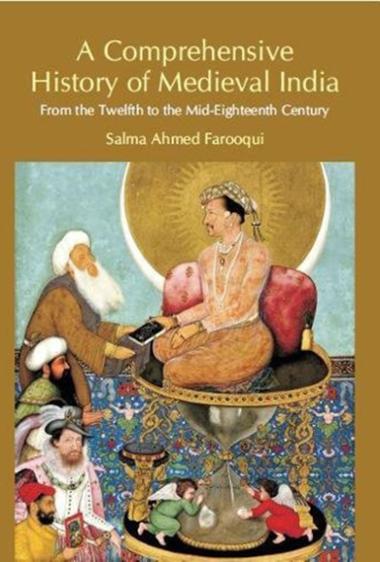A history of Mughal cuisine: Salma Husain reveals culinary secrets of the royal kitchens
One of India’s foremost food historians and author of fabulous books detailing culinary practices of the Mughal emperors, Salma Husain gives Anand Raj OK a glimpse into the dining halls and kitchens of the ancient rulers
Mention the name of the Mughal emperor Shah Jehan and perhaps the first image that comes to mind is of the Taj Mahal, the mausoleum that he built in memory of his wife Mumtaz Mahal.
But there’s a fascinating legend about food that is related to the ruler who during the peak of his reign in the 17th century was said to be one of the richest kings in the world. Deposed by his power-hungry son Aurangzeb (he was so mean he even got rid of his brother so he could grab the throne) and imprisoned in Agra Fort, Shah Jehan was allowed to choose only one ingredient that would be used to prepare dishes for him during his incarceration.
The story goes that the down-on-his-luck emperor did not think too long. Chickpeas, he is said to have wished for. And dishes made of this legume were the only ones he dined on for eight years until his death in 1666.
Centuries later, a dish in his name – Shahjahani Dal – made of mashed chickpea cooked in a rich gravy and subtly flavoured with spices continues to tingle tastebuds of foodies in the subcontinent and beyond.
Salma Yusuf Husain is not surprised that the emperor chose the humble chickpea over other ingredients. "It lends itself well to many dishes; he was sure he could never grow tired of enjoying it," says the 70-something resident of Mumbai.
Salma should know. The scholar of the Persian language – she has a master’s in it – who has been researching Mughal history and the cuisine of its emperors in particular for decades, is pretty much the last word when it comes to the culinary habits of the Mughals. At last count, she has published eight excellent books on food and Mughal dining practices.

Beginning her career in the National Archives’ manuscripts section in New Delhi deciphering documents from the colonial times and translating into English correspondence between natives and British officers, the connoisseur of food used her prowess in the language to study more about Mughal food habits. "Proficiency in the language helped me to start exploring the history of food, specifically in Mughal India, but also across the region."
The sprightly septuagenarian, in a telephone interview with Friday from her home in Mumbai, recalls how while poring over manuscripts in the archives she began to explore the possibility that the "Mughal emperors must have left some record of their foods besides their architectural glories".
Salma tasted success after discovering succulent morsels of Mughal culinary practices in ancient records like the Ain-i-Akbari that has detailed records of the Mughal Empire under Emperor Akbar, and Alwain-i-Nemat that lists activities in Jehangir’s kitchen. Enthused she began researcing more into their food habits. And was rewarded. "I found my first [food-related] manuscript from the Salar Jung Museum [in Hyderabad] and later [more] from the National Museum as well," she says. The record dated back to Jehangir’s period. "It’s interesting because in it you find the contribution of his wife Noor Jehan – how she chose ingredients for garnishing dishes, considered the use of hitherto unused ingredients…"
Warming up to the subject, Salma describes how Jehangir’s 20th (and last) wife would roast rice flour with rock sugar in ghee to make a dough, spread it out in sheets, shade portions of it in different colours (using natural vegetable dyes, of course), before cutting it out into shapes of flowers and leaves. "She would arrange these flowers on a pulao – much like we use icing to decorate cakes today. Imagine, icing on pulaos," says Salma, surprise and excitement still echoing in her voice.
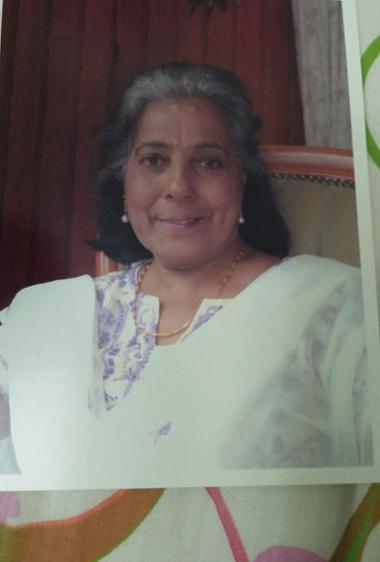
While cakes might not have been a popular dessert on the Mughal menu at the time – they figured only after the arrival of colonialists – there are plenty of records to show that the royalty of the time had a particularly strong sweet tooth, relishing even meat kebabs dipped in sugar syrup. And that was as an appetiser not a dessert.
Moving on from the Archives section, Salma, who has a master’s in Persian, went on to become director of hospitality at Hamdard University before she joined the ITC Hotels in India as a consultant on Indian food where for over two decades she developed new menus for the hotel chain.
After sampling her most recent book The Mughal Feast: Recipes From The Kitchen Of Emperor Shah Jahan, I ask her what led her to explore the Mughal kitchens in particular.
"When I began studying manuscripts on Mughal food and compared them to the fare that is now available in many restaurants as Mughlai, I found the latter was vastly different," she says, not without a tinge of sadness. Today, what passes off as Mughlai is spicy, extremely greasy and lacks presentation. "In those day, spices were few and were used sparsely, reasonably and in balance," she says. Each dish was prepared using specific mixtures of spices (masala) and one could not be substituted for the other. "Today, we buy [a branded packaged] masala and dump it in all gravies," she moans.
Another bone she has to pick is about the cooking method. A passionate advocate of slow cooking, she believes this helps develop the flavours of a dish. And when it came to slow cooking, Mughals, when not busy fighting wars or expanding their territory, clearly had all the time in the world to spend in the kitchen or the dining hall. Cooking was either over wood or coal, and many dishes like Haleeem (made of wheat, meat and lentils) and stuffed chicken on a cinnamon bed were slow cooked to perfection – placing the vessel on live coals and not on a direct flame.
She blames the pressure cooker and the microwave oven for creating dishes with poor flavours. "Luckily, slow heating cookers are slowly making a comeback," says the lady who has translated into English several texts from the Mughal times that deal with the culinary arts, including one titled Nushka-i-Shahjahani, pulaos from Shahjahan’s kitchen.
Apart from slow cooking which they perfected to an art form, Mughals were also masters of indirect cooking. In her book, Emperor’s Table, Salma mentions the elaborate preparation that went into the making of a mutton dish called Zer Biryan: Wooden sticks (some records say of the cinnamon tree) would be laid close to each other on the floor of a pan and marinated meats placed on them. The pot was then heated slowly and the meat allowed to cook without coming into direct contact with the vessel. When half done, parboiled rice was spread over the meat, the vessel sealed and the preparation allowed to cook on dhum.
Sparse with spices
"The Mughal spice box was very small," says Salma. Chillies were absent (they arrived with the Portuguese). Instead, long peppers were used to spice dishes. Saffron doubled as a colourant and a spice along with ginger, coriander seeds and cumin. "Garlic was a strict no-no. The emperors detested foul-smelling ingredients," says the food historian. "To that end fish was cleaned thoroughly, then caked with multani mitti and buried in the ground to eliminate the fishy smell." Some records say sandalwood paste was used to wash the fish just so it was pleasant scented.
As for cooking, the Ain-i-Akbari mentions how rain water mixed with water from the River Ganga was used for preparing all dishes. "The Mughals had an elaborate rainwater harvesting system that was used for cooking," she says.
If great pains were taken for cooking as much or more effort was spent to ensure that the dish was a visual treat as well. "Colours," says Salma, who believes food must be a multisensory experience, "were something Mughals loved." To that end, their dishes were a riot of shades. Apart from grains of rice, dairy products and even the oil used for cooking was coloured.
She mentions the making – and presentation – of what would have been a spectacular fruit yogurt: The inside of each serving bowl was partitioned into four sections using thin sheets of wood. Then, different coloured and flavoured fruit yoghurts were poured into each quadrant and allowed to set. Just before serving, the partitions were removed to leave the diner drooling with delight upon seeing the splendid colours before him.
"Presentation was given immense importance and chefs went to great lengths to make a dish a visual delight," says Salma. Apart from using coloured rice dough as ‘icing’ on a pulao, different kinds of dried fruits and nuts were glazed with coloured edible gum and tossed into a pulao to add not just colour but taste as well.
For some varieties of pulaos, one portion of rice was boiled in pomegranate juice to lend the grains a deep red colour, another portion in saffron water to stain the grains yellow, yet another portion boiled with spinach to shade the grains green. Clearly the royal kitchen boasted an army of assistants because individual grains of rice were coated with silver and gold foil (varq), before they were all tossed into the pulao. The result: a rice dish that resembled a brilliant jewellery set reflecting shades of rubies, sapphires and emeralds with gold and silver.
"Today, sadly, Mughlai dishes don’t get their due vis-à-vis presentation," she says.
Salma’s favourite Mughal dish
Having dug deep into Mughlai dishes – some of which she introduced into the menus while at ITC Hotels – I ask her what her favourite recipe is from the collections she has put together.
The sense of excitement is palpable in her: "It has to be naarang pulao, a one-pot meal. You will be amazed at the flavours it has," she says.
Put simply, the dish is rice parboiled in stock with plenty of dried fruits and chopped mint sprinkled over. In the dish are placed shells of three halved oranges (pulp removed), one having a paneer (hung yoghurt) preparation or a meat preparation, the second with zafran rice and the third with halwa (a dessert). The dish is then dum cooked.
"This is a true one-pot meal," says Salma. "You do not have to keep several pots and pans on the table. Just one for each person and that has rice, meat and a dessert. Not only is it a hearty meal but it also looks attractive on the table."
The complete recipe of naarang pulao is included in The Mughal Feast, which also has a spread of recipes from bhartas and kebabs to biryanis and desserts. In the naan section, there are a dozen varieties, including some made with besan, others flavoured with almonds and pistachios.
The kebab section has some 30 varieties, including one made of meat layered with apples and boiled eggs, while the rice section is a banquet of 40 varieties of pulaos and biryanis.
Given the Mughal emperors’ penchant for things sweet, cooks did not hesitate to add sugar to even the pulaos. Thus there’s zard pulao (cinnamon flavoured rice cooked with sugar syrup and garnished with raisins); muzaffar pulao (where a couple of cups of sugar are added to stock to cook four cups of rice) and mutanjan pulao (lamb and rice slow cooked in sugar syrup).
Surely one reason they went on those long wars was to burn off all these calories? I ask. Salma laughs. "Remember they were also good sportspersons playing polo, going horse riding and on hunts," she says.
Fresh fruits were another favourite of the Mughals – Shahjehan loved mangoes – and they did not hesitate to add them in just about every dish. Lamb curry? Add some raw or ripe mangoes. Lamb and rice? Serve with steamed pineapples (ananas pulao) or with bananas soaked in sugar syrup (mauz pulao). Fish curry? Cook with slices of sweetmelon.
Some people today might furrow their brows at the dishes, but food and its preparation were clearly taken very seriously. Akbar, for instance, insisted that the prime minister have an eye on the happenings in the kitchen. "The mir bakhawal (chief taster and head cook) consulted the hakims (physicians) who prepared the daily menu based on the emperor’s temperament, likes, dislikes, sleeping patterns..." she says.
The hakim had a huge role to play as he was responsible for maintaining the health of the emperor. If something went wrong, then the hakim would be hauled up and would have a lot of answering to do.
Of noodles and pasta
Not one to spend all her research in the Archives’ dusty rooms perusing ancient manuscripts, Salma also travelled extensively across central Asia including, Afghanistan, Tashkent, Bukhara and Samarkhand researching the history of Mughal cuisine. Since she had spent some time as head of the Dari (a language spoken in Afghanistan) section of All India Radio in New Delhi, her expertise in the language came in useful during her tours in these regions.
Tell me the most surprising thing you discovered about Mughal cuisine during your travels, I ask Salma.
"Ahh, I shall tell you a little story," she says, excitedly. "Once, I was staying in a bed and breakfast in Samarkhand with an Afghani family that included three girls. One morning when I was came down for breakfast, I saw the girls sitting on the floor of the central hall, heads bent down busy doing something. I went over and found they were making noodles. Can you believe it! Noodles. In Samarkhand! They told me noodles and pasta were part of their regular food.’
Salma believes these foods entered the Mughal kitchens – in pulaos, aashs (soups) and gravies – thanks to the Silk Route that ran from China through Samarkhand all the way to Italy.
"Food," says Salma, "opens doors to many civilisations. And they all leave their impact on the culture and the peoples.
"The Mughals," she goes on, "gave India a large dastarkhana (space where food is eaten)." If Babur brought with him Central Asian cuisine, Humayun did his bit spooning in a few Iranian dishes to the Mughal kitchen’s repertoire. Jehangir, who spent a lot of time in Kashmir and enjoyed hunting game birds around the present Dal Lake, ensured stuffed partridge and goose were also served to royalty. After he went on his expeditions to present-day Gujarat, vadis and khichdis (popular dishes in the region) mushroomed on the Mughal menu. "Incidentally, there’s an entire chapter devoted to the making of khandvis (a Gujarati savoury primarily made of gram flour and yogurt) and kichdis (a dish made of rice and lentils). There are recipes for around 12 kichdis," she says.
Aurangzeb, on his return after his missions in the Deccan Plateau, brought with him some flavours of Deccan – evident in the use of sour ingredients in dishes during the latter part of the Mughal rule.
The Portuguese would do their bit to temper the Mughals’ palate introducing chillies. They also introduced potatoes and tomatoes to the Mughal larder.
Practices that have survived
While many Mughal culinary practices have slowly evaporated over the course of time, Salma is happy that at least a few have survived.
"Dum cooking is one," she says. Dungar is another. The latter involves spooning ghee (clarified butter) over hot coals kept in a smoking chamber placed in a lidded pot. This process gave food, particularly meats and pulaos, a buttery, smoky flavour as a finishing touch.
A favourite of Salma’s though is Takhni – making a stock of meat for pulaos and biryanis. "These days, most people parboil in water because they do not have time to make stock." But for pulaos or biryanis, the rice has to be parbioled in stock, never in plain/salted water, she believes.
In the royal kitchen, stock preparation was an important process. "Once prepared, it was strained to remove all solids like onion or ginger. This ensured the diner would not bite into anything that would take away from the pleasure of the dish.’
Although reluctant to end the interview, I ask her what the popular Mughal desserts were.
"They gave us kheer and firni. Then there’s the Shahi Tukda. Towards the later years of the empire, Indian cooks were slowly entering the Mughal kitchen and the menus began to include dishes from the halwaais (sweet makers) of Delhi. Thus ghajazr halwa, motichoor ladoo, badu shahi slowly became popular," she says.
Is there another book in the making?
"Ahh yes," she says, "on the pastimes of the Mughals. You know, they were experts in kite-flying, pegeo flying, wrestling, chess… There’s a lot to write about."
Culinary secrets of the Mughals
Sherbets: Noorjehan takes credit for creating the sherbet that we now know of and are popular. The story goes that one day she was walking in the royal garden relishing the scent of the roses, particularly those from Shiraz, which are known for their fragrance, when a thought came to her: why not make sherbets from roses. Until then sherbets were made of roots and herbs for medicinal purposes. Noorjehan summoned the hakim and voiced her thoughts. Today, no Mughal-themed dinner is complete without a sherbet.
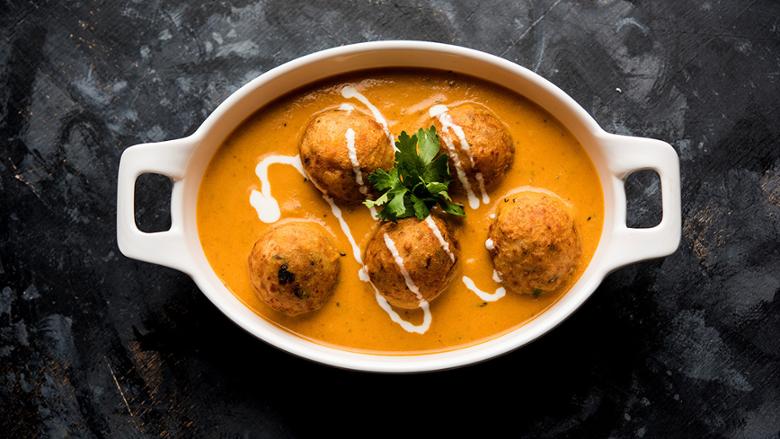
Kofta: One of the most intriguing recipes though is of kofta. The Mughal kofta is no ordinary one. "So delicate and soft was it that it is said that if a grain of mustard was placed on top of it, the seed would sink right through smoothly."
Cooking hack: The royal chefs employed some interesting techniques when preparing dishes. Shallow, flat-bottomed sauce pans were used instead of deep vessels. In the case of the latter, the heat from a wood fire gets concentrated in the middle whereas in the case of shallow bottomed pan the flames would lick around the sides of the pan as well cooking the meat or rice perfectly and evenly.
